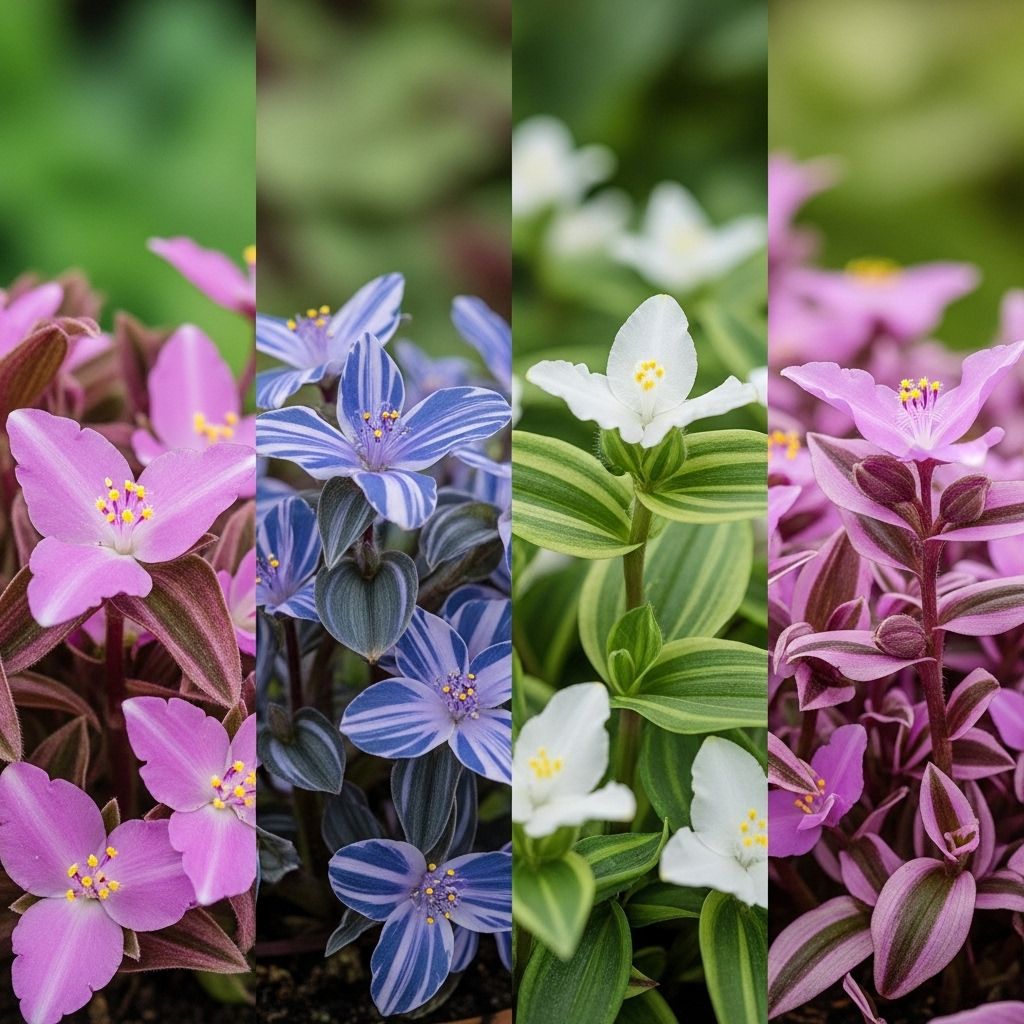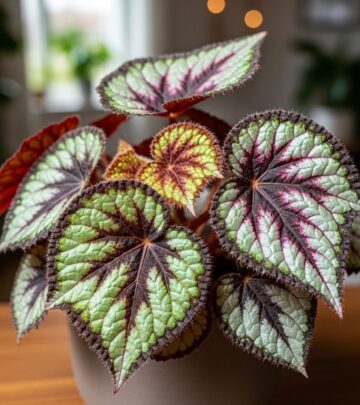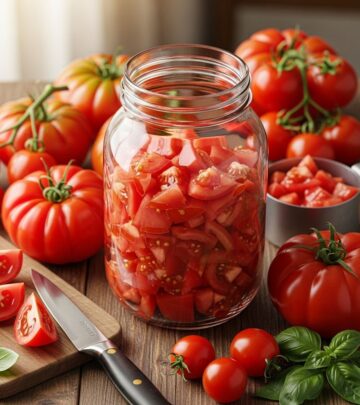Tradescantia Plant Care: 4 Varieties & Expert Care Tips
Discover vibrant foliage secrets and expert advice to keep your plants thriving beautifully.

Image: HearthJunction Design Team
A Guide to Growing Tradescantia: Care, Types, and Tips
Tradescantia, commonly known as the inch plant or spiderwort, is a versatile and attractive houseplant appreciated for its colorful foliage and easy care requirements. This guide covers everything you need to know about growing, propagating, and maintaining Tradescantia, ensuring your plants remain vibrant and healthy year-round.
Introduction to Tradescantia
Native to the Americas, Tradescantia species are members of the Commelinaceae family. They are renowned for their rapid growth, trailing growth habit, and striking leaf colors, ranging from deep purples and greens to variegated patterns. Tradescantia are popular as both indoor and outdoor plants, celebrated for their adaptability and low-maintenance nature.
Tradescantia Varieties and Types
Tradescantia comes in various species and cultivars, each offering unique foliage and care needs. Some of the most popular varieties include:
- Tradescantia zebrina: Known for its silver-striped leaves and purple undersides—ideal for hanging baskets.
- Tradescantia fluminensis: Features bright green leaves, sometimes with white or pink variegation.
- Tradescantia pallida (Purple Heart): Boasts deep purple foliage and thrives in full sun.
- Tradescantia sillamontana (White Velvet): Covered in fuzzy white hairs, giving it a soft, velvety texture.
How to Grow Tradescantia
Growing Tradescantia successfully starts with proper soil, lighting, and watering practices.
Soil Requirements
Tradescantias prefer rich, well-draining soil with an acidic pH between 5.0 and 6.5. While adaptable to average garden soil, they require consistent moisture but should not be waterlogged. For indoor plants, use a high-quality, all-purpose potting mix with added perlite or vermiculite for improved drainage.
Light Needs
Tradescantia thrives in bright, indirect sunlight. Direct sunlight can scorch the leaves, while too little light may cause the vibrant colors to fade. Indoors, place your plant near a north or east-facing window for optimal growth.
Watering Tips
Keep the soil consistently moist, but avoid overwatering, which can lead to root rot. Allow the top inch of soil to dry out between waterings. Reduce watering frequency in winter when plant growth slows.
Temperature and Humidity
Tradescantia prefers average room temperatures (65–75°F / 18–24°C) and can tolerate average household humidity. However, higher humidity encourages lush growth. Avoid placing the plant near drafts, air conditioners, or heaters, as sudden temperature fluctuations can stress the plant.
Tradescantia Care Guide
Fertilizing Tradescantia
Fertilize your Tradescantia monthly during the growing season (spring and summer) with a balanced liquid fertilizer diluted to half strength. Avoid fertilizing in fall and winter when growth slows.
Pruning and Maintenance
Regular pruning helps maintain a compact, bushy shape and encourages fuller growth. Pinch back the tips of the stems to promote branching. Remove any yellow or dead leaves to keep the plant healthy.
Pot Requirements
Choose a pot that is slightly wider and deeper than the root ball, ensuring it has adequate drainage holes. This prevents waterlogging and root rot.
Propagating Tradescantia
Tradescantia is one of the easiest plants to propagate. Here are three common methods:
Stem Cuttings in Water
- Take a healthy stem cutting (3–6 inches long) with at least one leaf node.
- Remove the lower leaves and place the cutting in a glass of water.
- Roots should form within 1–2 weeks. Once roots are established, plant in soil.
Stem Cuttings in Soil
- Prepare a pot with well-draining soil.
- Insert the stem cutting directly into the soil, ensuring at least one node is buried.
- Keep the soil moist and place in a bright, warm location.
Division
- Gently remove the plant from its pot and separate the root ball into sections, each with healthy roots and leaves.
- Plant each division in a new pot with fresh soil and water thoroughly.
Troubleshooting Common Problems
Yellowing Leaves
Yellow leaves can indicate overwatering or poor drainage. Allow the soil to dry out slightly between waterings and ensure the pot has adequate drainage.
Leggy Growth
Leggy or sparse growth often results from insufficient light. Move the plant to a brighter location and consider pruning to encourage bushiness.
Pests
Tradescantia are generally pest-resistant but can occasionally attract spider mites, aphids, or mealybugs. Treat infestations with insecticidal soap or neem oil.
Growing Outdoors
Many Tradescantia species can be grown outdoors in USDA zones 9–11. They make excellent ground covers or container plants in partial shade. In cooler climates, grow Tradescantia as an annual or bring indoors before the first frost.
Table: Tradescantia Care Summary
| Aspect | Details |
|---|---|
| Light | Bright, indirect sunlight |
| Soil | Well-draining, slightly acidic (pH 5.0–6.5) |
| Watering | Keep soil moist, allow top inch to dry |
| Temperature | 65–75°F (18–24°C) |
| Humidity | Average to high |
| Fertilizing | Monthly, spring–summer |
| Propagation | Stem cuttings, division, seed |
Frequently Asked Questions (FAQs)
Q: How often should I water my Tradescantia?
A: Water your Tradescantia when the top inch of soil is dry. Avoid overwatering, as this can cause root rot.
Q: Why are the leaves on my Tradescantia turning brown?
A: Browning leaves may be due to too much direct sunlight or underwatering. Move the plant to a shadier spot and check soil moisture.
Q: Can I grow Tradescantia outdoors?
A: Yes, Tradescantia can be grown outdoors in USDA zones 9–11. In cooler climates, treat as an annual or bring indoors before frost.
Q: Is Tradescantia toxic to pets?
A: Tradescantia can be mildly toxic to cats and dogs, causing irritation if ingested. Keep out of reach of pets.
Q: How do I propagate Tradescantia?
A: Propagate by stem cuttings in water or soil, or by division of the root ball.
Conclusion
Tradescantia is a rewarding and resilient plant for both novice and experienced gardeners. With proper care—including the right soil, light, and watering regimen—your Tradescantia will flourish, providing year-round beauty and enjoyment. Whether you grow it indoors or out, this versatile plant is sure to impress with its vibrant foliage and easygoing nature.
References
Read full bio of Shinta












